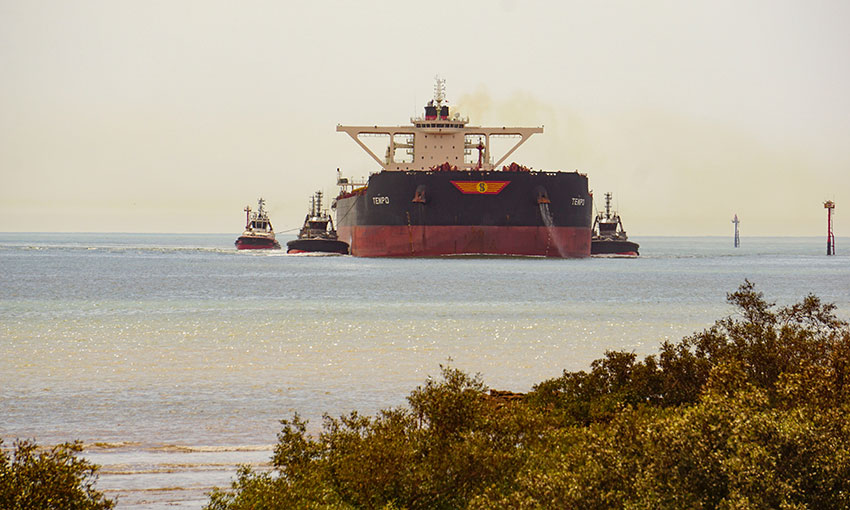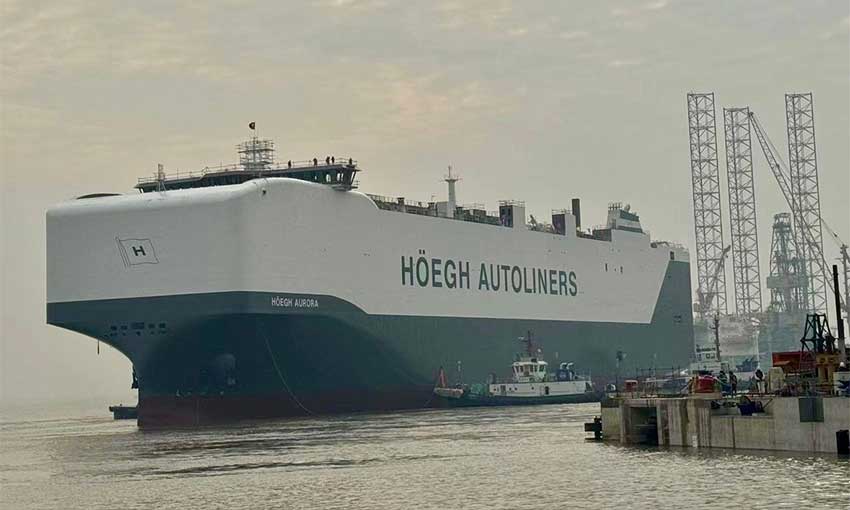A NEW study from the West Australia – East Asia Iron Ore Green Corridor Consortium finds that ships powered by clean ammonia could be deployed on the iron ore trade routes between West Australia and East Asia by 2028 and reach 5% adoption by 2030.
According to the consortium, green corridors are trade routes where zero-emission shipping systems are supported and demonstrated.
The study indicates that the core elements for implementation of a West Australia-East Asia green corridor – including deployment of ammonia-powered ships, access to clean ammonia (as the most likely zero-emission fuel to power the corridor), and the availability of bunkering infrastructure – are within reach, provided that the safety case for the use of ammonia as marine fuel is validated and accepted.
Findings suggest that it is possible to get clean ammonia-powered bulk carriers on the water by 2028, provided the development of key technologies, such as suitable engines, and regulations remain on track.
Enough clean ammonia will likely be available to meet the corridor’s near and long-term requirements. Should production scale up as expected, the corridor’s demand could be fully met by Australian clean ammonia but could also be imported from other production locations globally. The study also shows that the Pilbara region of Australia is a viable option for bunkering on the route, avoiding costly deviations from the trade route, whilst Singapore remains well-positioned to serve as a bunkering hub.
Should the corridor develop in accordance with the scenario in the analysis, more than 20 vessels could operate on clean ammonia on the corridor by 2030, scaling up to roughly 360 vessels by 2050.
Global Maritime Forum CEO Johannah Christensen said: “The study demonstrates the industry’s keen interest to decarbonise their supply chain in the region. What is needed now to accelerate the development of this green corridor is public sector support”.
While the opportunity to develop a West Australia-East Asia green corridor is within reach, the study also outlines important conditions that must be in place for it to be successfully developed, including continued collaboration and co-ordinated action through the corridor’s value chain and the development of appropriate commercial frameworks. In parallel with this study, the Getting to Zero Coalition has established an Australia-East Asia Iron Ore Corridor Task Force to act as a collaborative industry forum to explore these issues.
The study is based on analysis by the Energy Transitions Commission, on behalf of the West Australia – East Asia Iron Ore Green Corridor Consortium, a collaboration between the Global Maritime Forum, BHP, Rio Tinto, Oldendorff Carriers, and Star Bulk Carriers.
BHP vice-president maritime and supply chain excellence Rashpal Bhatti said: “Through this collaboration with the Global Maritime Forum and the consortium members, BHP is pleased to see that the rigorous, data-led analysis of this study indicates the feasibility of using clean ammonia on vessels sailing through the West Australia to East Asia corridor. In line with our net zero ambitions, we seek to influence this supply chain, with our ecosystem partners, by creating demand for low- and zero-GHG emission fuels and energy efficient vessels”.
Rio Tinto head of commercial operations Laure Baratgin said the West Australia – East Asia Iron Ore Green Corridor represents a great opportunity to aggregate green fuel demand and supply in support of the industry’s journey towards net-zero in this major trade lane.
“As we build on the study to realise a safe and economic green shipping corridor, public-private partnership is key to bring this project to life. Rio Tinto remains committed to collaborating with value chain partners in support of this initiative as we work to deliver our climate commitments on shipping,” she said.





